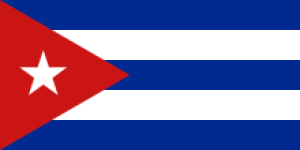2024 Will See Wave Of Minimum Wage Hikes — But The Impacts Won’t Be Felt Evenly
No Comments yet
Jeannette Wicks – Photo: Political Economy Research Institute
02-02-2024 ~Ten million US workers will see wage increases this year, but inflation has eroded our tools for reducing inequality.
On January 1, 2024, the minimum wage increased from coast to coast. Indeed, 22 states and more than 40 cities and counties experienced wage increases in 2024 — most of them approaching $15. More states will follow with minimum wage increases later in the year. Undoubtedly, this is mainly the result of underpaid workers organizing and fighting for a decent living wage over the past decade, but is a minimum wage enough? Moreover, where are the increases in minimum wage taking place?
A look at the map shows that the South still trails behind. Could this be due to racism in the labor market? In the exclusive interview with Truthout that follows, progressive economist Jeannette Wicks-Lim shares her research findings and insights on the politics and economics of increasing minimum wages. Wicks-Lim is a research professor at the Political Economy Research Institute (PERI) at the University of Massachusetts Amherst and specializes in labor economics with an emphasis on the low-wage labor market.
C. J. Polychroniou: The federal minimum wage is still $7.25, but higher minimum wages went into effect in early January in 22 states, while three more (Florida, Nevada and Oregon) will increase their minimum wages later in 2024. How many and what sort of workers are going to be affected by these wage increases, and how significant are these minimum wage hikes in improving the overall standard of living for low-wage workers?
Jeannette Wicks-Lim: First, to your question about how many and what sort of workers will benefit from these minimum wage increases: An excellent resource for understanding the basic facts of who will benefit from these minimum wage increases is the Economic Policy Institute.
There are two basic types of raises that result from these increases — mandated and ripple-effect raises. Mandated raises are the raises that get workers up to the new, higher minimum wage level. Ripple-effect raises are raises that employers may choose to give workers who are earning a little more than the minimum wage — often these are workers with more experience than the entry-level workers who are more likely to earn minimum wage rates. Employers may do this so that the workers with more experience continue to earn more than entry-level workers after the minimum wage goes up. Overall, about 10 million workers — including both types of raises — will receive wage increases. This represents about 15 percent of the workforces in the states implementing minimum wage hikes. So, the impact — in terms of the share of affected workers — is substantial.
Due primarily to occupational segregation, women are over-represented in low-paying jobs, so they tend to receive a disproportionate share of the raises. Low-wage jobs are particularly concentrated in food services, for example, particularly fast-food restaurants. Workers in other service industries, such as home care aides and child care workers, are well represented among those whose wages rise with minimum wage hikes.
Black, Indigenous, and other workers of color also tend to be overrepresented among the workers who receive raises from minimum wage hikes when looking within the states adopting minimum wage hikes. However, it’s important to note that a majority of Black Americans do not reside in the states raising their minimum wage so that, overall, such workers are underrepresented among pool of beneficiaries from minimum wage hikes. This reflects the fact that southern states, and especially those that formerly made up the Confederate states, tend to have weak labor standards. This is clearly visible when you look at a map of where the minimum wage hikes are happening. The history of racism in the U.S. — especially in how the labor market operates — shows up clearly here.
Next, to your question about how the minimum wage raises affect the living standard of low-wage workers: I know from the multiple studies my colleagues at PERI and I have done in the past that the earnings of minimum wage workers typically contribute 40 percent of their household’s income so that a meaningful raise to these workers pay rates have a meaningful impact on their household incomes. These workers are typically from lower- to middle-income households.
Now, some of the minimum wage hikes that will pass are quite small — they only account for the increase in inflation rather than increasing the wage floor in inflation-adjusted terms. So, it’ll be workers in those states that lift the wage floor in real, inflation-adjusted terms, that can expect meaningful boosts to their living standards. Roughly speaking, about half the states raising their minimum wages are adopting increases in the range of 3 percent — these reflect, generally speaking, inflation-related adjustments. Another quarter of these states have minimum wage hikes in the range of 7 percent, and the remaining quarter are raising their minimum wage floors in excess of 10 percent.
In the states with minimum wage hikes of at least 10 percent, my back-of-the-envelope calculations suggest that the average worker who receives a raise will be able to boost their household’s income by about 4 percent (10 percent raise x 40 percent contribution to household income). This is a meaningful increase. For a low-income household with three people (say, an income of $35,000), that translates to an annual increase of nearly $1,400. At the same time, given the rate of inflation in the last few years, even the smaller inflation-adjustment raises serve as important safeguards to at least maintaining workers’ living standards.
Why is it that half of the country is raising the minimum wage while the other half is not? In this context, can you talk about the politics behind minimum wage increases? For instance, there have been strong public campaigns to raise wages and end subminimum wages since the outbreak of the COVID-19 pandemic.
I’m not a political scientist, so my views on this are more impressionistic than based on any research I’ve done. What seems to be an important determinant of whether a minimum wage hike passes or not is how directly voters can weigh in on the question.
What I’ve observed is that minimum wage hikes are typically extremely popular at the ballot box. When voters get a chance to directly weigh in on whether their state should strengthen this labor standard, they typically vote in favor in large numbers. It seems that voters see minimum wage hikes as reasonable, fair and potentially beneficial to themselves and the economy. This is a popular issue even across the two major political parties. Take as an example, Florida, in which 71 percent of voters voted in favor of establishing that state’s minimum in 2004. In that same year, the majority of these Florida voters voted for Republican presidential candidate George W. Bush.
As we move further away from voters having a direct say, such as minimum wage hikes proposed by state legislators, there seem to be more mixed results and partisan politics appear to play a stronger role. Getting a minimum wage hike through a state legislature dominated by the Republican Party is, it seems, nearly impossible. Again, this isn’t my area of research, but what this suggests to me is that business interests are more successful in lobbying Republican-leaning legislators than Republican-leaning voters. That, in turn, suggests that Republican-leaning legislators benefit more from these business interests than Republican-leaning voters. Still, states have increasingly taken up the role of strengthening this wage floor as the federal rate has stagnated. In 1980, for example, only two states operated with a state minimum age higher than the federal rate — Connecticut and Alaska. Now, as you note, about half the states in the country are increasing their minimum wage rates while the federal rate remains unchanged. I would bet that states that have a higher state minimum wage than the federal level and that typically have Republican-leaning state legislatures got their minimum wage rate through a ballot initiative.
At the federal level, there is no option to put this question directly to the voters. States that operate with the federal rate have seen the long stretches of time with no minimum wage hike — from 1982 to 1989 (eight years), and again from 1998 to 2006 (nine years), and now from 2010 to today (at least 14 years). The last federal increase — in 2009 — as the second step in a two-part increase was signed into law by a Republican president and a Democratic-led U.S. Congress. Since then, none have passed.
Do increases in the minimum wage affect the labor market?
I’ll focus on one of the important ways that the minimum wage impacts the labor market: The minimum wage has played an important role, at least historically, in reducing wage inequality. Prior to 1980, the minimum wage rose roughly in step with worker productivity so that the lowest wages increased in a meaningful way over time. And, because of ripple effect raises, these increases would basically pull up the bottom of the wage distribution closer to the middle. One important feature of the minimum wage to notice is that while these ripple-effect raises extend the benefits of minimum wage hikes to workers earning above the minimum wage, this pool of beneficiaries is really limited to workers at the low end of the wage distribution. High-wage workers, on the other hand, do not get raises from changes to the minimum wage. As a result, minimum wage-induced raises have the effect of compressing the wage distribution — i.e. reducing overall wage inequality. I say historically, because this role has been weakened in recent decades, especially in the states that only operate with the federal minimum, as the federal minimum wage has lost a significant amount of its inflation-adjusted value.
Another major way that the minimum wage, again historically, reduced wage inequality occurred when the Fair Labor Standards Act strengthened the labor standard by expanding which workers would be protected. Prior to 1966, the standard did not apply to a large segment of the low-wage workforce, excluding occupations in which Black workers were overrepresented due to racial discrimination. These occupations included farming and various service sector jobs. In their 2021 study, economists Ellora Derenoncourt and Claire Montialoux found that when these types of occupations became newly protected in 1966, the federal minimum wage reduced the earnings gap between Black and white workers by roughly one-fifth.
The minimum wage is regarded by many economists as an important tool of public policy for combating poverty and inequality. Do minimum wages deliver what they promise?
I’ve already touched on the topic of how the minimum wage impacts inequality so let me focus here on the question of poverty. I think of the minimum wage as being primarily a policy tool that helps low-income to middle-income households. This is because the minimum wage has no statistically discernible impact on employment (positive or negative) and so it is a policy tool that benefits employed workers, most directly. Those who are unemployed, or not in the labor force can only benefit indirectly from minimum wage hikes, e.g. through the earnings of other household members or by maintaining the labor standards of existing jobs so that when such individuals become employed, they benefit from the minimum wage floor. Other policies need to supplement robust minimum wages to effectively tackle poverty. The other policies that I think of include economic policies to move the U.S. economy to full employment, policies that subsidize traditionally unpaid work (e.g. child care and elder care), and policies that reduce wealth inequality so that more households are able to weather financial shocks, such as medical emergencies and spells of unemployment.
This interview has been lightly edited for clarity and length.
Source: https://truthout.org/
You May Also Like
Comments
Leave a Reply







